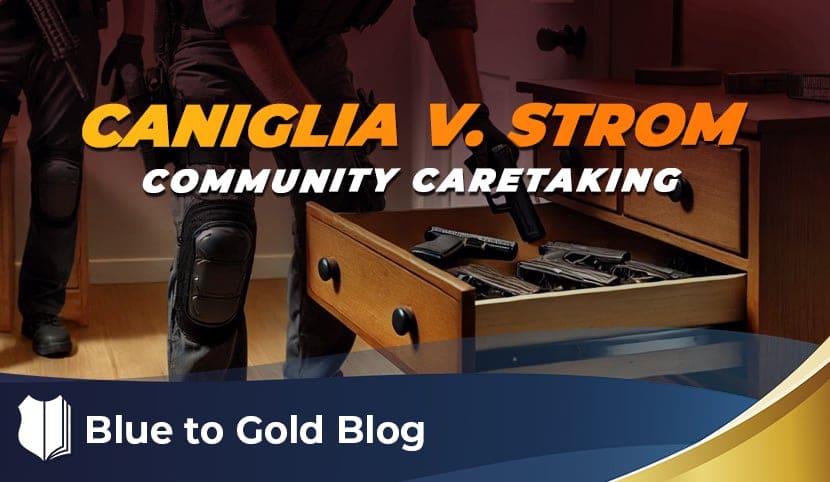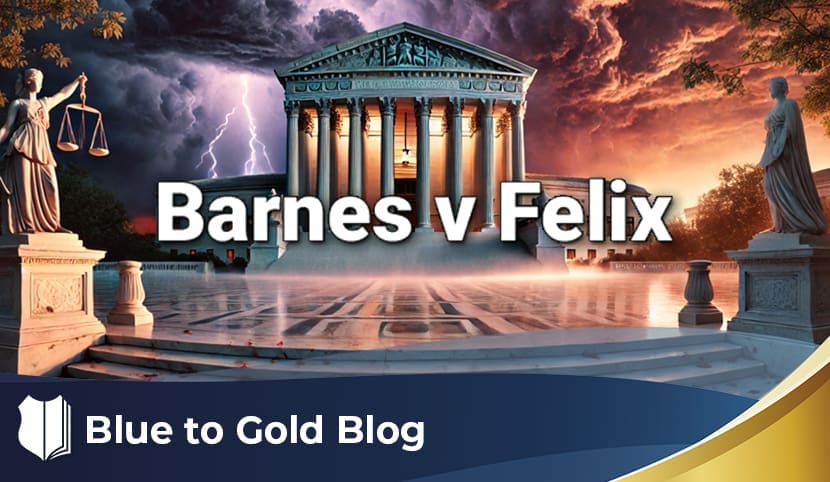All right, everyone, let’s talk about Caniglia v. Strom, decided by the U.S. Supreme Court on May 17, 2021. I’ve been discussing this case for months now, and my students frequently ask for my opinion on it. Let me share some background and explain why this is such an important case on two major fronts:
- Firearm confiscation under red flag laws
- Clarification of the “community caretaking” doctrine as it applies to homes
Here’s a quick summary of the facts:
Police were called to a home after a husband allegedly made a comment suggesting suicidal thoughts. He had told his wife something along the lines of, “Why don’t you just shoot me and get it over with?” Concerned, the wife stayed at a hotel that night. The next morning, when she couldn’t reach him, she called the police for a welfare check.
Officers contacted the husband, who assured them he wasn’t a danger to himself. He voluntarily agreed to go to the hospital for a psychiatric evaluation. While he was gone, the officers spoke to the wife, who returned home. Knowing the husband owned firearms, the officers entered the home—without a warrant or consent—and seized his guns. They justified this under the community caretaking doctrine, reasoning that leaving the firearms could lead to harm if the husband returned and hurt himself or others.
The husband later sued, arguing the warrantless entry violated his Fourth Amendment rights. After losing in both federal district court and the First Circuit Court of Appeals (which upheld the police action as legitimate under the community caretaking doctrine), the case went to the Supreme Court.
Here’s where it gets interesting: Justice Thomas, writing for the Court, ruled that the community caretaking doctrine does not apply to homes. The Court emphasized that warrantless entries into homes require exigent circumstances, such as emergencies, consent, or other established exceptions like the emergency aid doctrine.
Why is this case significant?
1. Impact on red flag laws
This ruling has significant implications for red flag laws, which allow police to seize firearms from individuals deemed a danger to themselves or others. Many of these laws permit warrantless entries into homes. After Caniglia, such laws face serious constitutional challenges. The Fourth Amendment requires judicial pre-approval (like a warrant) for such entries, even in cases where public safety is at stake.
While officers can still seek consent from someone with lawful access to the home or its contents, a blanket red flag law authorizing warrantless entries likely won’t hold up under scrutiny.
2. Clarification of the community caretaking doctrine
The ruling reaffirms that community caretaking—a principle traditionally applied to vehicles and public spaces—does not extend to homes. Unlike vehicles, which are mobile and often present immediate risks, homes have heightened Fourth Amendment protections.
For example, an officer stopping to check on a driver with a flat tire or a pedestrian in distress falls under community caretaking. However, entering someone’s home without exigency or a warrant cannot be justified on the same grounds.
Broader consequences
This case is seen as a victory by many Second Amendment advocates, as it limits governmental overreach and protects the rights of firearm owners. It also underscores the importance of proper judicial authorization before invading the sanctity of a home.
My take
I’ve long predicted this outcome. The Court’s reasoning aligns with foundational Fourth Amendment principles: warrantless home entries must be grounded in emergencies, consent, or similar exigent circumstances—not generalized caretaking concerns.
For those of you asking how this affects your work, it highlights the need for clear articulations of exigency or consent when entering a home. Without those, warrantless actions won’t hold up in court.
If you have any questions or want more training on search and seizure laws, let me know!








